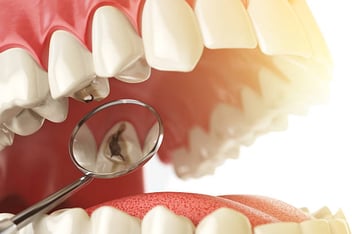Conquering Gingivitis: Understanding and Preventing Gum Inflammation
Gingivitis is a common and reversible form of gum disease characterized by inflammation and irritation of the gums. If left untreated, it can progress to more severe gum disease and lead to tooth loss. This blog post provides an in-depth understanding of Gingivitis, its causes, symptoms, potential complications, and effective preventive measures to combat gum inflammation and maintain healthy gums.
Causes of Gingivitis:
Gingivitis primarily occurs due to the accumulation of plaque, a sticky film of bacteria that forms on teeth. The following factors contribute to the development of Gingivitis:
1. Poor Oral Hygiene: Inadequate brushing and flossing allow plaque to build up on the teeth and along the gumline, leading to gum inflammation.
2. Plaque and Tartar Buildup: When plaque is not regularly removed through proper oral hygiene practices, it can harden into tartar (calculus). Tartar buildup provides a rough surface where bacteria can thrive, exacerbating gum inflammation.
3. Hormonal Changes: Hormonal fluctuations during puberty, pregnancy, and menopause can make gums more susceptible to inflammation and Gingivitis.
4. Systemic Factors: Certain health conditions and lifestyle habits, such as diabetes, smoking, poor nutrition, and stress, can increase the risk of developing Gingivitis.
Symptoms of Gingivitis:
Recognizing the signs and symptoms of Gingivitis is crucial for early detection and prompt intervention. Common symptoms include:
1. Red and Swollen Gums: Inflamed gums appear red, swollen, and tender.
2. Bleeding Gums: Gums may bleed during brushing, flossing, or even spontaneously.
3. Lousy Breath: Despite regular oral hygiene, persistent bad breath can indicate gum inflammation.
4. Gum Sensitivity: Gums may feel sensitive or painful, especially when applying pressure.
5. Receding Gums: As Gingivitis progresses, the gums may start to pull away from the teeth, causing gum recession.
Preventing Gingivitis involves establishing a consistent oral hygiene routine and adopting healthy habits. Here are some effective preventive measures:
1. Brush and Floss Regularly: Brush your teeth at least twice daily with a soft-bristle toothbrush and fluoride toothpaste. Floss daily to remove plaque and debris between the teeth and the gum line.
2. Use Antimicrobial Mouthwash: Rinse with an antimicrobial mouthwash to help reduce plaque and control bacteria in the mouth.
3. Visit the Dentist Regularly: Schedule regular dental check-ups and professional cleanings to remove plaque and tartar buildup, monitor gum health, and address concerns.
4. Maintain a Healthy Lifestyle: Adopt a balanced diet rich in vitamins and minerals, limit sugary foods and beverages, quit smoking, manage stress levels, and maintain a healthy weight.
5. Practice Proper Oral Hygiene Techniques: Proper brushing and flossing techniques ensure thorough plaque removal. Ask your Dentist for guidance if needed.
Conclusion:
Gingivitis is a common and treatable condition that can be prevented with consistent oral hygiene practices and healthy habits. By prioritizing regular brushing, flossing, professional dental care, and a healthy lifestyle, you can maintain healthy gums and reduce the risk of gum inflammation. If you notice any signs of Gingivitis, it's essential to seek dental care promptly to prevent the progression of gum disease and maintain optimal oral health. Remember, a proactive approach to gum health leads to a confident smile and overall well-being.
.png?width=80&height=80&name=Clove%20Dental%20White%20Small%20(28).png)



